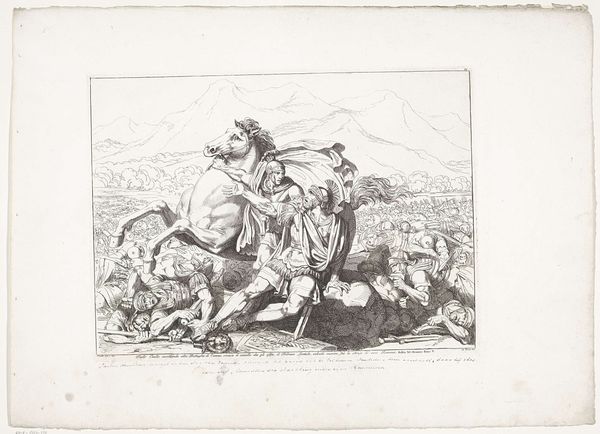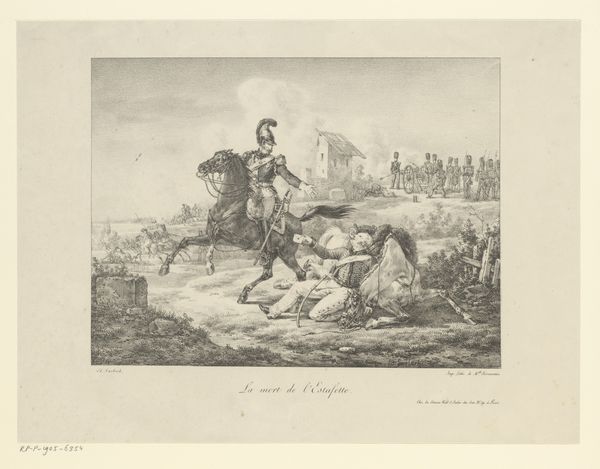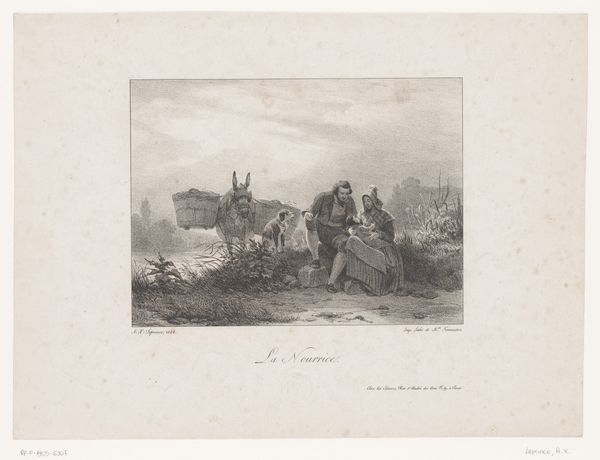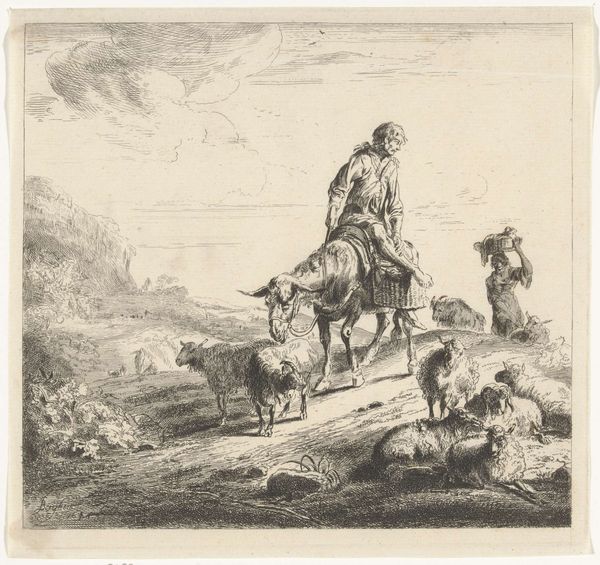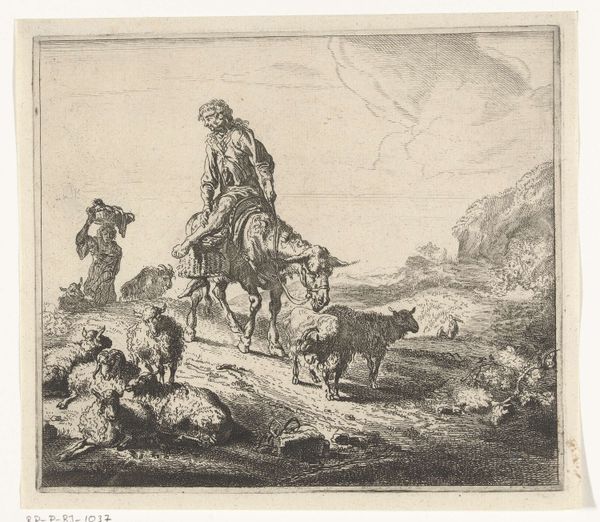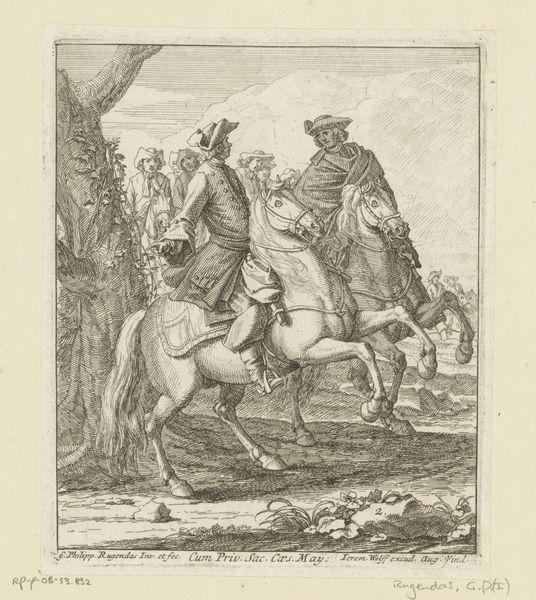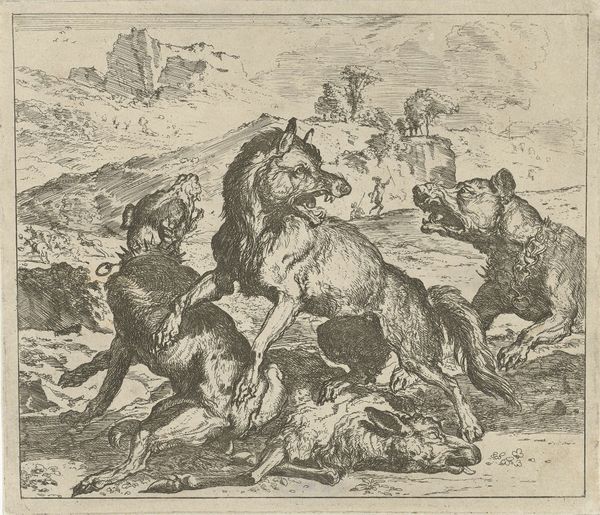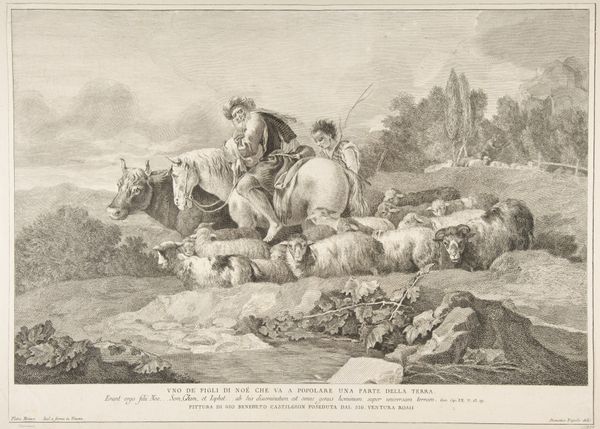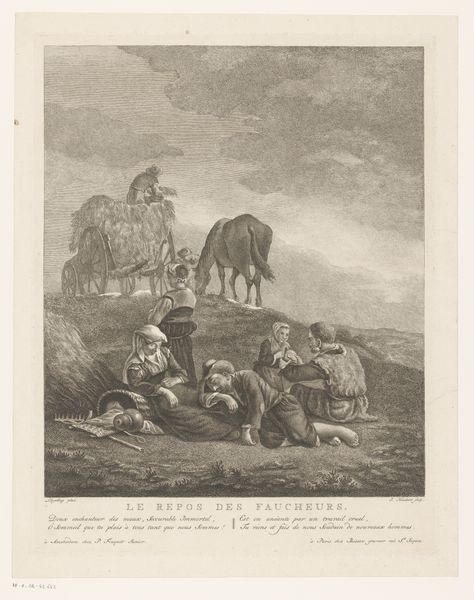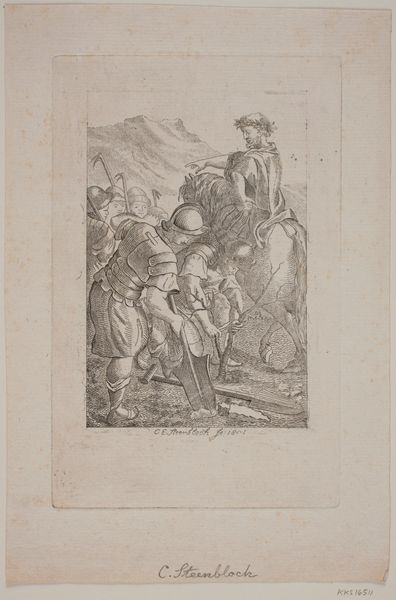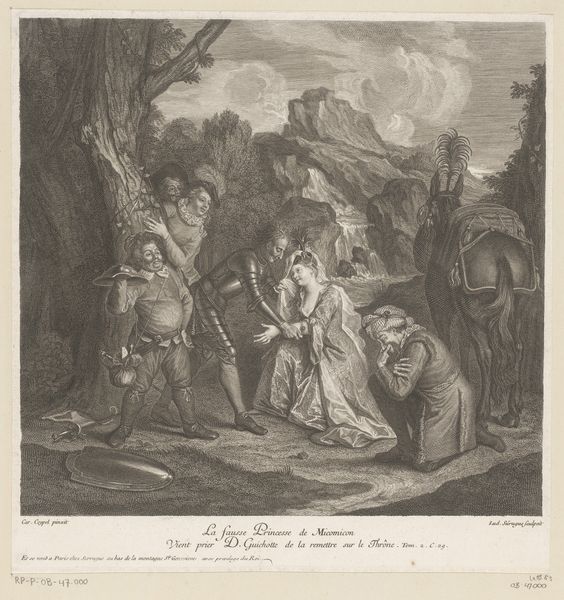
drawing, lithograph, print, paper
#
drawing
#
narrative-art
#
lithograph
# print
#
paper
#
romanticism
#
france
#
history-painting
Dimensions: 213 × 200 mm (image); 353 × 271 mm (sheet)
Copyright: Public Domain
Editor: This is Auguste Raffet’s 1828 lithograph, "He must see things favorably!", housed here at the Art Institute of Chicago. It's… unsettling, to say the least. There’s a lot of drama in the composition with what appears to be bandits, and then...is that a body hanging in the background? How do you interpret this work? Curator: It’s undeniably a provocative image. Raffet situates us within a specific historical context: the Romantic era's fascination with political upheaval, violence, and the plight of marginalized communities. The print allows for a nuanced exploration of power, specifically focusing on those who are historically denied any visibility, let alone basic rights. Editor: So it's a critique? The title seems ironic, considering what's happening in the scene. Curator: Exactly. Think about who "sees things favorably" here. Is it the bandits profiting off violence, or perhaps those complicit in systemic oppression? The print questions who benefits from social disorder. The dangling body in the background serves as a stark reminder of the cost of such skewed perspectives. Consider also the role of Romanticism. Editor: I can see that. So, Raffet is using Romanticism’s dramatic aesthetic to underscore a really uncomfortable political truth. Curator: Precisely. And lithography, as a printmaking technique accessible to a wider audience, allowed Raffet to disseminate this message broadly. It encouraged conversations—dare I say, foment resistance—among those who felt marginalized. Editor: Wow, I hadn't thought about it in those terms. I was too focused on the immediate shock of the imagery. Curator: It's easy to get caught up in the sensationalism. But Raffet demands we look deeper, questioning not just the scene depicted but also our own positions within the social and political landscape. Editor: This really sheds light on how art can act as a mirror, reflecting the complexities and inequalities of its time. It's made me reconsider how I approach analyzing historical works. Curator: Indeed, and remember that even now, the work still speaks, challenging us to examine how similar structures of power and oppression persist in contemporary society.
Comments
No comments
Be the first to comment and join the conversation on the ultimate creative platform.

